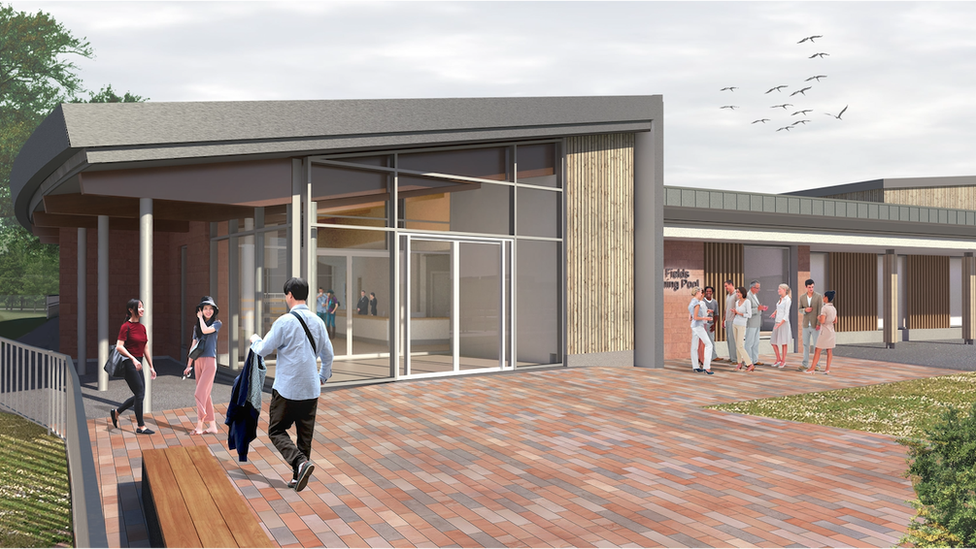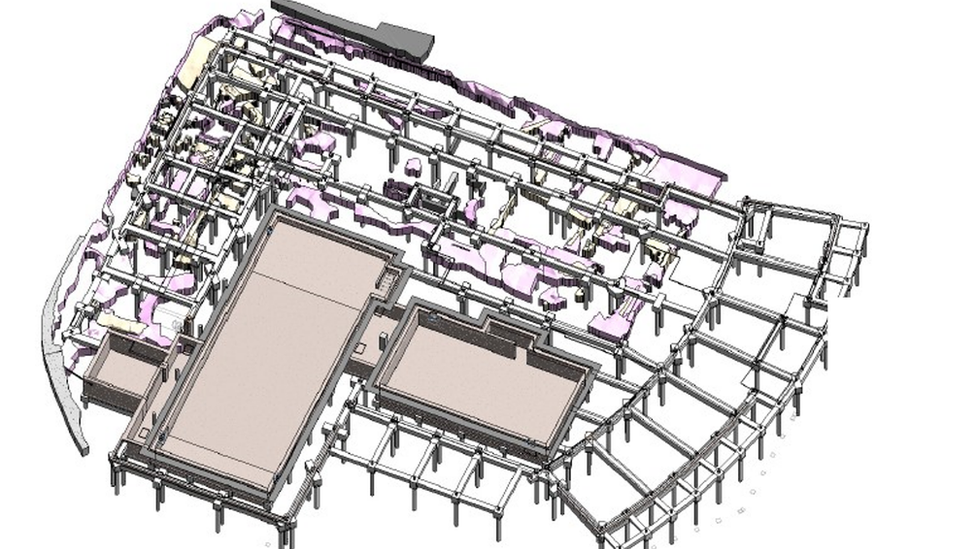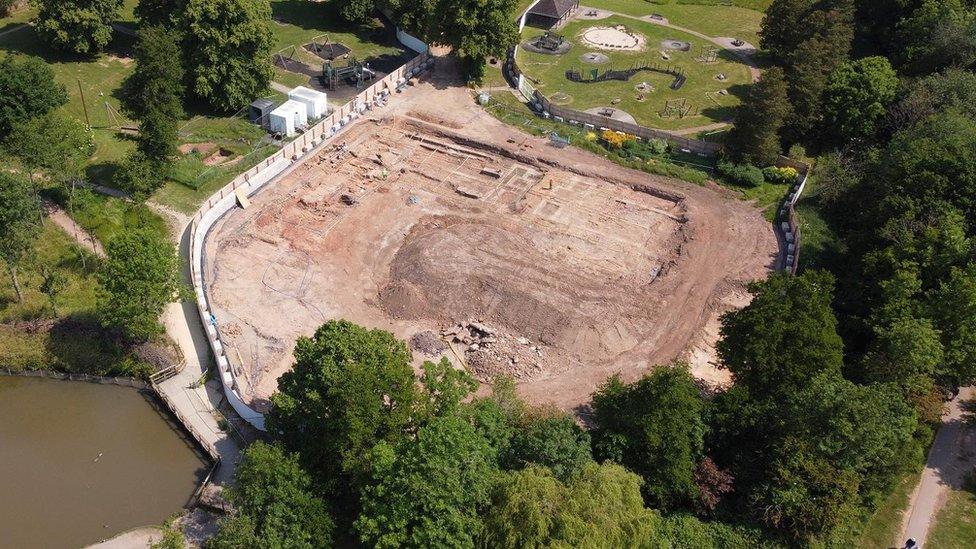Plan for public pool on Kenilworth medieval site hit by rising costs
- Published

The discovery of the medieval remains has meant a rise in costs for a new swimming pool, rendered here via an artist's impression
Revised plans to construct a new swimming pool on top of the remains of medieval buildings have been unveiled.
Ceramics and at least five buildings, some dating back to the 13th Century, were found at Abbey Fields in Kenilworth, Warwickshire, during work to demolish the previous pool.
Showcasing plans for the pool's replacement, Warwick District Council said the discovery led to a "significant" increase in costs.
Work was also delayed at the site.
Historic England approved revised plans to raise the level of the new swimming pool building so it sat on top of the remains.
Abbey Fields was once farmland, which belonged to St Mary's Abbey until it was dissolved in the 16th Century.
Padraig Herlihy, who is leading Warwick District Council's project, told a public meeting that his team would continue to work on the revised plans for the pool to avoid any additional delay, unless the decision was taken to not progress.
Councillors were due to meet in November to make a decision, he said.
Revisions could increase costs by up to £7.9m, with councillors also asked to consider at subsequent meetings cancelling the project altogether or picking other sites within the town.

Plans for the foundations were unveiled at a public meeting
Plans for the new pool building would be redesigned to raise the foundations by 19.6 inches (50cm), constructing a suspended slab to take the weight off the medieval remains, Mr Herlihy said.
"The position of every pile will be agreed with Historic England," he told the meeting at St Nicholas's Church on Wednesday.
The building height would be raised by 13.7 inches (35cm) too, he explained, and there would be a new design to the drainage system to avoid any significant clashes with the medieval remains.

Medieval remains were found on the site in July, delaying work
Before any work started, the ruins would be covered in a layer of soil. The public may view the ruins between 09:00 to 17:00 BST on 3 October.
"We appreciate that this is a short window for people to see these amazing discoveries, but it is vitally important that the ancient structures that have been exposed are now re-covered to ensure that they are preserved in the best possible condition," said Tim Mailim, the project's archaeological consultant.

Follow BBC West Midlands on Facebook, external, Twitter, external and Instagram, external. Send your story ideas to: newsonline.westmidlands@bbc.co.uk, external
Related topics
- Published19 September 2023

- Published21 August 2023
- Published14 July 2023